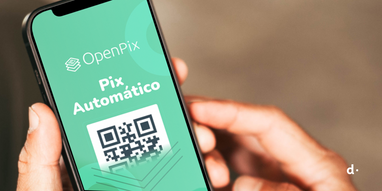Expanding into India? Meet instant payment method UPI

Learn more about UPI, the world's largest real-time payment method, and how you can benefit from this alternative payment method to expand your business reach in India.
Saying that India's eCommerce industry is a fast-growing market is not news. More and more global enterprises are expanding into the region. However, they will only touch the surface of their revenue potential if they don't utilize the right localized payment mix.
India’s payment mix
International credit cards account for 23% of eCommerce transactions in India. Alternative payment methods (APMs) like digital wallets, cash, and bank transfer claim a significant portion of the eCommerce payment pie. Remember, in addition to the share that the payment method currently holds, merchants should pay attention to each option's growth speed.
Enter UPI (Unified Payments Interface). In April 2018, two years after its launch, UPI handled 190 million transactions. Only six months later, that figure rose to 482 million monthly transactions.
UPI is used for 35% of digital payments, with an unprecedented adoption rate. In August 2023, four years after its launch, UPI handled 10 billion transactions (online and offline). That figure rose to
What is UPI?
UPI is an instant real-time payment system facilitating inter-bank transactions, developed by the NCPI, an umbrella organization for operating retail payments and settlement systems in India.
Think of UPI as "an email ID for the money," a unique identifier the bank uses to transfer money to merchants or other banks in real time. It uses a Virtual Payment Address – e.g., john@icicibank – as a unique ID for identifying its users and performing payments.
When looking at UPI, one must recognize the strategies utilized to assist its tremendous growth. India has made it law for any company making above USD$6 million in sales to accept UPI payments and has banned transaction fees for customers and merchants.
Why are end-users adopting UPI?
Always available: UPI is a 24/7/365 service
Easy to use: not necessary to type payment or account details – accept the payment request already displayed on the screen.
already displayed on the screen.
One account: The user holds all their bank accounts under one profile
Safe and secure: no need to share credentials – use the virtual ID (VPA). It is more difficult for criminals to gain access, as the interface uses a Double factor Authenticator (2FA)
The bigger picture
While the penetration of Paytm and other wallets might seem high, the number of bank accounts in India is much higher than that of wallet users.
By implementing UPI, the expectation was that those who do not have eWallets but have a bank account and want to start transacting online have access. UPI genuinely started democratizing digital payments in India, and the best part is that it is present from the day you have a bank account.
Flow from end-user side
Looking forward with UPI
UPI is making the Indian financial system more inclusive. The Reserve Bank of India (RBI) has proposed enabling AI tech to allow users to make digital payments through voice commands. Adding Conversational Payments to the app will make it simple and even more user-friendly to initiate transactions. In another proposed update, the RBI wants to implement NFC-enabled tech to facilitate 100% offline payments. NFC enables communication between two devices over 4m away.
India's eCommerce industry is expected to reach $USD1.1 trillion by 2027, and $USD2 trillion by 2032. If you want to be a part of India's growth and expansion, remember to consider regional regulation complexities, localized payment methods such as UPI, and the unique socio-economic factors in the country.
Get in touch with our payment experts
We help global companies such as Amazon, Spotify, and Microsoft find new opportunities in high-growth markets. Let's think outside the box for tailor-made payment solutions for your business. Fill out this form, and we'll get back to you as soon as possible.
Contact us




